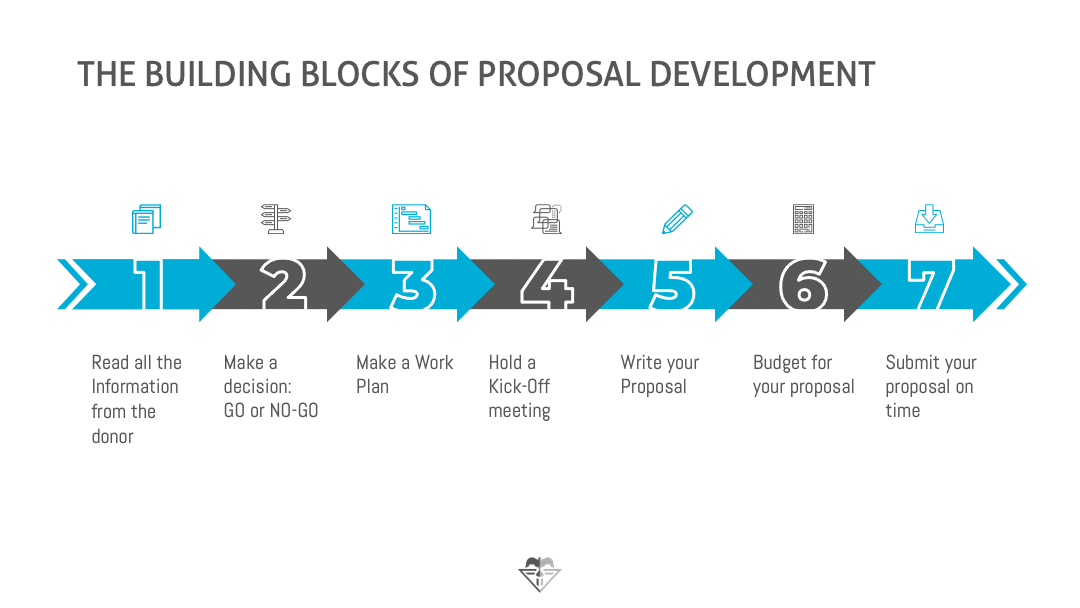Structuring winning proposals
Winning proposals is a difficult journey. It is indeed a demanding, competitive and time-limited process that require extensive resources and concerted efforts. It is therefore crucial for NGOs to be strategic, thorough and well-coordinated to position themselves as best as they can to win the grant.
One of the most important steps in writing in general, and especially in proposal writing, is structuring. Figuring out the right structure not only helps the writing process flow robustly and efficiently, but also brings about a cohesive synergy among all the key elements of the proposals.
Figuring out the right structure not only helps the writing process flow robustly and efficiently, but also brings about a cohesive synergy among all the key elements of the proposal.
However, more often than not, tight proposal deadlines force many organizations to jump into the writing process without sufficient planning. A common mistake here is to reuse an old proposal or template and retrofit new pieces of writing to it. While many proposals may share a few common elements, this approach overlooks a critical part of the structuring process — identifying and understanding the donor’s concerns and ambitions.
Every donor has a different vision, a different focus, and a different research question. The donor’s logic is perhaps the most important component in creating your proposal structure. Reading and analyzing the language in the donor’s call for proposal and in their communication materials can reveal substantially about their judging criteria and expected outcomes for the project. For example, some may focus on the impact of the project while others look more closely at the implementation plan.
There’s no one-size-fits-all template that applies to all calls for proposals.
The donor’s logic affects how to prioritize certain sections and how to rearrange your proposal structure to highlight how you are addressing their central questions, concerns, and goals. The key to work out the cohesion throughout the proposal is to form two teams, a writing and a reviewing team. It is crucial to ensure that everybody knows their roles and responsibilities and how to coordinate their work with one another. The writing team will populate the necessary contents and the reviewing team will tie all the sections together and make sure that the donor’s logic is effectively followed.
Here is a short summary of the proposal development process for your references

If you would like to know more proposal development or need further help in your proposal structuring and writing, do not hesitate to contact us to arrange for a conversation with us!

An Ngo
A communicator by training and a consultant by trade, An joined the development sector after four years of experience in communications strategy, publication design and market research. He strives to help NGOs elevate their work and achieve their ambitions with his diversity of experiences and perspectives. An holds a Master Degree in Globalisation and Development Studies from Maastricht University.
stay up to date
We have at heart to be a resource to you. According to your preference, we will share insights, trainings, networking events and career opportunities that might be of interest for anyone from entry-level to seasoned professionals.
Contact
Phone
+31 (0)6 30 69 45 95
Address
Eursinge 8, 7935AB Eursinge (de Wolden), The Netherlands
228 East 45th Street, Suite 9E New York, NY 10017, USA
info@hvfc-international.com
Join us on
© 2024 HVFC International. All rights reserved.
HVFC ® is a registered trademark of HVFC International B.V.